Mass Spectrometry
Reliable, High Quality Solutions for LHS Mass Spectrometry Challenges
Used in fields as critical as neonatal screening, to analyzing the pesticide content in foods, to drug development for some of the deadliest diseases, today’s mass spectrometers need to be capable of detecting and quantifying compounds over a large dynamic range of concentrations to very low limits.
Mass spectrometry can trace its origins to the turn of the 20th century when the first discovery of positive ion streams formed from residual gases were found in CRTs. New ionization techniques continued to develop well into the 1990s. Still operating on many of the original principles, today’s instruments are more robust, predominantly software controlled, data intensive and highly complex. The complexity arises not only from requirements for greater automation and smaller footprint, but also from instrument sensitivity requirements. Companies strive to accomplish more with fewer resources and less laboratory space.
Figure 1. Functional components of a quadrupole mass spectrometer.
The heart of any mass spectrometer is its analyzer. Within the analyzer’s high vacuum region, ions generated from samples are guided on a specific pathway by an electrostatic or electromagnetic field. Ions of various mass, kinetic energy, and charge are moved differently depending on the strength of the field. Mass spectrometers range from the simple quadrupoles to the highly advanced hybridized instruments (with multiple mass spectrometric and fragmentation methods) but operationally, they all share one thing in common—a vacuum system operating at one or more finely controlled pressure regimes. A suboptimal vacuum can produce product path deviations for the analyte ions, creating undesirable ion-molecular reactions and background interference, leading to loss of sensitivity.
Challenges in Mass Spectrometry
Mass spectrometers have improved rapidly in performance and can differentiate between molecules that weigh 356.0005 amu from those that weigh 356.0006 amu. These highly sensitive instruments are routinely used for high throughput analyses, generating terabytes of data. Resolving power, robustness and accuracy has also migrated to other laboratory areas such as clinical chemistry bringing new design and analysis requirements. Some of the key challenges today include:
- Ultra High Vacuum (UHV) standards for chamber design and assembly
- Extremely reliable pressure and vacuum measurement and stable gas flow and control
- Informatics: data mining, visualization, predictive analysis—intensive automated data analysis
- Highly precise lasers and motion stages
Solutions for Mass Spectrometry
Custom Vacuum Solutions
One of the most critical areas in a mass spectrometer is the vacuum chamber where the fundamental mass to charge separation takes place. The vacuum chamber must be free of any scratches or aberrations, ultra-clean and properly vacuum sealed. MKS Custom Vacuum Solutions offers state-of-the-art machining, welding, finishing and cleaning, as well as subassembly, assembly and system testing of components, to UHV standards. MKS provides expert engineering, custom subcontract manufacturing and focused project management ensuring reliable, high quality vacuum solutions.
Indirect Vacuum Measurement
It is critical to maintain vacuum levels within the chamber during analysis. Any deviations in that level or leaks could lead to a significantly reduced sensitivity, suboptimal performance and inaccurate data. MKS is the global leader in pressure, vacuum measurement and control. Customers turn to our Granville-Phillips® Vacuum Gauge solutions for reliable, precise vacuum measurement across a wide vacuum range, from 10-11 Torr to 1,000 Torr, for the most demanding mass spectrometry applications. MicroPirani™, Micro-Ion® and hot and cold cathode gauges offer high quality, increased reliability and superior lifetime performance.
Mass Flow Control
A number of mass spectrometry techniques involve controlled amounts of gases flowing into the instrument. In order to maintain instrument resolution and sensitivity, the flow needs to be precise, stable and repeatable across the full range of flow rates. MKS Flow Solutions offer a number of products to regulate gas flow. MKS’ proprietary control algorithms provide fast and repeatable response to set point throughout the device control range. Current mass flow controllers (MFCs) feature multi-gas, multi-range capability, remote access for real-time monitoring and elastomer and metal seal options. In addition, our MFCs are clean-room manufactured to eliminate contamination of analyte samples during analysis.
Pressure Control
For ultraclean vacuum environment requirements, MKS is a leader in high reliability, precision stainless steel vacuum isolation and pressure control valves. The UHV valve features metal ConFlat® flanges to limit outgassing and permeation for all vacuum to atmosphere seals and is assembled in a Class 100 clean room. Our family of vacuum isolation valves includes bellows and ball valves, manual, pneumatic and electro-pneumatic actuated valves in heated or unheated angle and inline configurations, safety shut off valves and soft start valves.
Products for Mass Spectroscopy
For additional insights into semiconductor topics like this, download our free MKS Instruments Handbook: Semiconductor Devices & Process Technology
Request a Handbook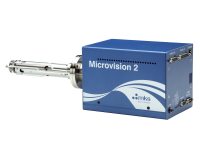
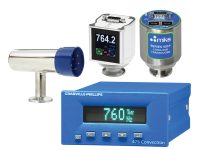
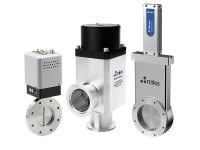
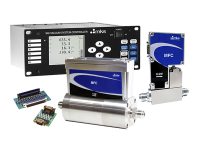
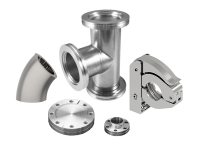
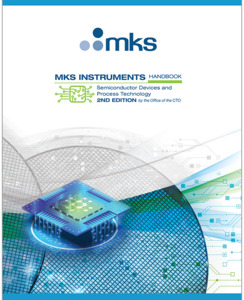
 Ultra-High Velocity
Ultra-High Velocity